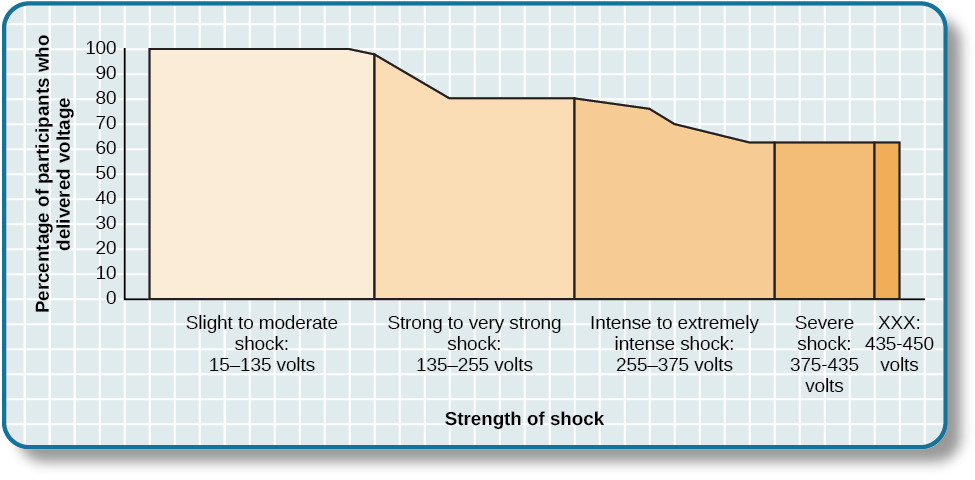| << Chapter < Page | Chapter >> Page > |
How would you have behaved if you were a participant in Asch’s study? Many students say they would not conform, that the study is outdated, and that people nowadays are more independent. To some extent this may be true. Research suggests that overall rates of conformity may have reduced since the time of Asch’s research. Furthermore, efforts to replicate Asch’s study have made it clear that many factors determine how likely it is that someone will demonstrate conformity to the group. These factors include the participant’s age, gender, and socio-cultural background (Bond&Smith, 1996; Larsen, 1990; Walker&Andrade, 1996).
Watch this video to see a replication of the Asch experiment.
Conformity is one effect of the influence of others on our thoughts, feelings, and behaviors. Another form of social influence is obedience to authority. Obedience is the change of an individual’s behavior to comply with a demand by an authority figure. People often comply with the request because they are concerned about a consequence if they do not comply. To demonstrate this phenomenon, we review another classic social psychology experiment.
Stanley Milgram was a social psychology professor at Yale who was influenced by the trial of Adolf Eichmann, a Nazi war criminal. Eichmann’s defense for the atrocities he committed was that he was “just following orders.” Milgram (1963) wanted to test the validity of this defense, so he designed an experiment and initially recruited 40 men for his experiment. The volunteer participants were led to believe that they were participating in a study to improve learning and memory. The participants were told that they were to teach other students (learners) correct answers to a series of test items. The participants were shown how to use a device that they were told delivered electric shocks of different intensities to the learners. The participants were told to shock the learners if they gave a wrong answer to a test item—that the shock would help them to learn. The participants gave (or believed they gave) the learners shocks, which increased in 15-volt increments, all the way up to 450 volts. The participants did not know that the learners were confederates and that the confederates did not actually receive shocks.
In response to a string of incorrect answers from the learners, the participants obediently and repeatedly shocked them. The confederate learners cried out for help, begged the participant teachers to stop, and even complained of heart trouble. Yet, when the researcher told the participant-teachers to continue the shock, 65% of the participants continued the shock to the maximum voltage and to the point that the learner became unresponsive ( [link] ). What makes someone obey authority to the point of potentially causing serious harm to another person?


Notification Switch
Would you like to follow the 'Psychology' conversation and receive update notifications?